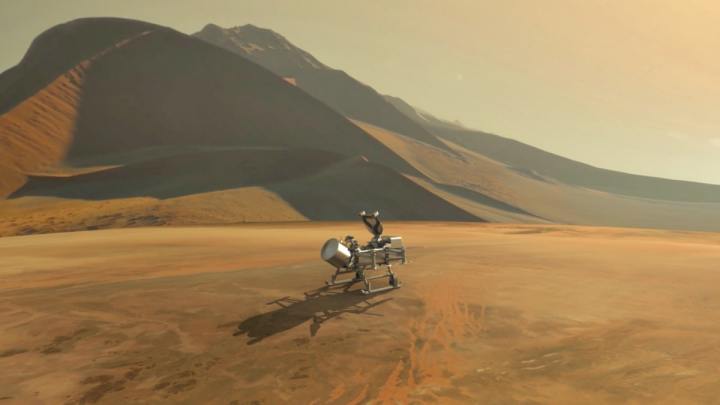
With the success of the Ingenuity helicopter on Mars, NASA is forging ahead with its plans for more flying robotic spacecraft to explore distant parts of the solar system. In 2027, it’s sending a rotorcraft called Dragonfly to explore Titan, the moon of Saturn, in the hopes of sniffing out signs of life there.
Now, the Dragonfly science team has announced the goals of their mission — including searching the moon for chemical biosignatures that could indicate life. Titan is an intriguing location to search for life because it is thought to have a liquid water ocean beneath its icy crust. As well as furthering the hunt for life beyond Earth, Dragonfly will also investigate the moon’s methane cycle and the complex chemistry of its atmosphere and surface.
“Titan represents an explorer’s utopia,” said co-author Alex Hayes, associate professor of astronomy in the College of Arts and Sciences and a Dragonfly co-investigator. “The science questions we have for Titan are very broad because we don’t know much about what is actually going on at the surface yet. For every question we answered during the Cassini mission’s exploration of Titan from Saturn orbit, we gained 10 new ones.”
The last probe to visit Titan was the Cassini–Huygens craft, launched in 1997. Though this mission was a fabulous success in terms of exploring both Saturn and its rings and moons, there is much that we still don’t know about the region. The Huygens probe entered the atmosphere of Titan to take readings in 2005, but no craft has ever explored the surface of Titan before Dragonfly.

Titan’s weather system is intriguing, and like Earth, it has lakes, rivers, and rains, but these consist of methane rather than water. It’s possible that this methane could even host life that is chemically different from that here on Earth. To learn more, Dragonfly will land on the surface of Titan — helped along by its thick atmosphere and low gravity, which make it ideal for exploring from the air.
“What’s so exciting to me is that we’ve made predictions about what’s going on at the local scale on the surface and how Titan works as a system,” Hayes said, “and Dragonfly’s images and measurements are going to tell us how right or wrong they are.”



